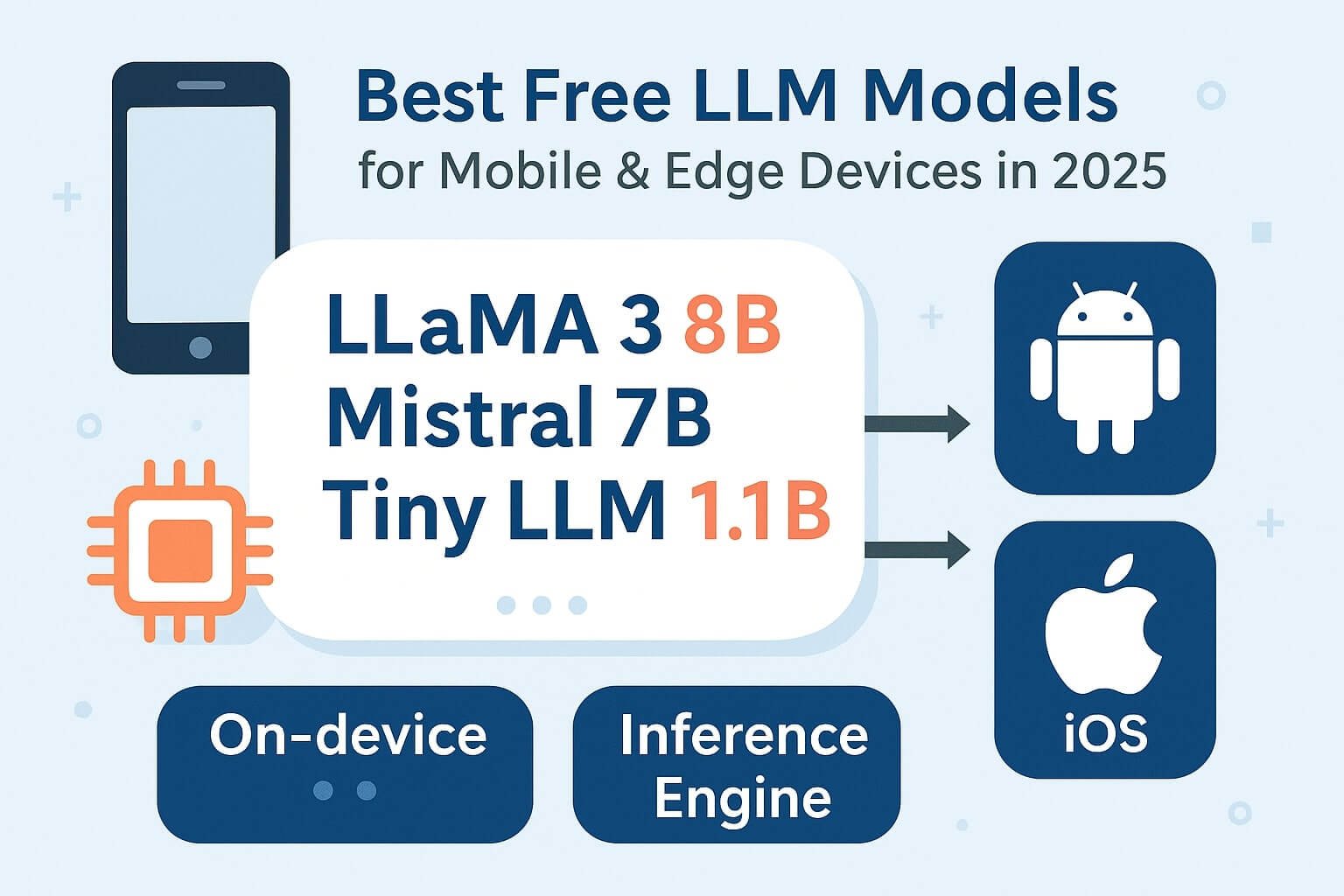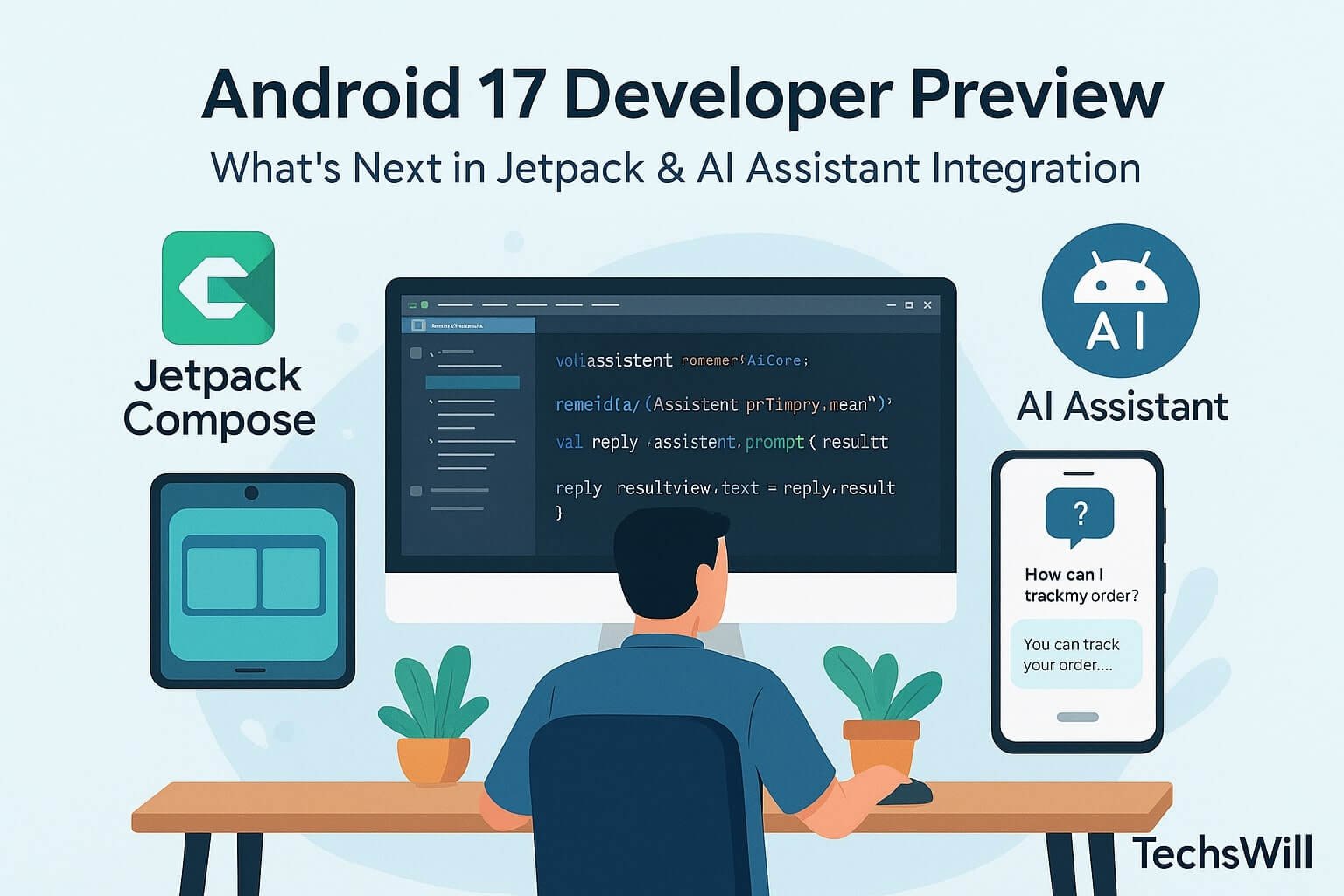Large language models are no longer stuck in the cloud. In 2025, you can run powerful, open-source LLMs directly on mobile devices and edge chips — with no internet connection or vendor lock-in.
This post lists the best free and open LLMs available for real-time, on-device use. Each model supports inference on consumer-grade Android phones, iPhones, Raspberry Pi-like edge chips, and even laptops with modest GPUs.
📦 What Makes a Good Edge LLM?
- Size: ≤ 3B parameters is ideal for edge use
- Speed: inference latency under 300ms preferred
- Low memory usage: fits in < 6 GB RAM
- Compatibility: runs on CoreML, ONNX, or GGUF formats
- License: commercially friendly (Apache, MIT)
🔝 Top 10 Free LLMs for Mobile and Edge
1. Mistral 7B (Quantized)
Best mix of quality + size. GGUF-quantized versions like q4_K_M fit on modern Android with 6 GB RAM.
2. LLaMA 3 (8B, 4B)
Meta’s latest model. Quantized 4-bit versions run well on Apple Silicon with llama.cpp or CoreML.
3. Phi-2 (by Microsoft)
Compact 1.3B model tuned for reasoning. Excellent for chatbots and local summarizers on devices.
4. TinyLLaMA (1.1B)
Trained from scratch for mobile use. Works in < 2GB RAM and ideal for micro-agents.
5. Mistral Mini (2.7B, new)
Community-built variant of Mistral with aggressive quantization. < 300MB binary.
6. Gemma 2B (Google)
Fine-tuned model with fast decoding. Works with Gemini inference wrapper on Android.
7. Neural Chat (Intel 3B)
ONNX-optimized. Benchmarks well on NPU-equipped Android chips.
8. Falcon-RW 1.3B
Open license and fast decoding with llama.cpp backend.
9. Dolphin 2.2 (2B, uncensored)
Instruction-tuned for broad dialog tasks. Ideal for offline chatbots.
10. WizardCoder (1.5B)
Code generation LLM for local dev tools. Runs inside VS Code plugin with < 2GB RAM.

🧰 How to Run LLMs on Device
🟩 Android
- Use llama.cpp-android or llama-rs JNI wrappers
- Build AICore integration using Gemini Lite runner
- Quantize to GGUF format with tools like llama.cpp or llamafile
🍎 iOS / macOS
- Use CoreML conversion via `transformers-to-coreml` script
- Run in background thread with DispatchQueue
- Use CreateML or HuggingFace conversion pipelines
📊 Benchmark Snapshot (on-device)
| Model | RAM Used | Avg Latency | Output Speed |
|---|---|---|---|
| Mistral 7B q4 | 5.7 GB | 410ms | 9.3 tok/sec |
| Phiphi-2 | 2.1 GB | 120ms | 17.1 tok/sec |
| TinyLLaMA | 1.6 GB | 89ms | 21.2 tok/sec |
🔐 Offline Use Cases
- Medical apps (no server calls)
- Educational apps in rural/offline regions
- Travel planners on airplane mode
- Secure enterprise tools with no external telemetry
📂 Recommended Tools
- llama.cpp — C++ inference engine (Android, iOS, desktop)
- transformers.js — Web-based LLM runner
- GGUF Format — For quantized model sharing
- lmdeploy — Model deployment CLI for edge




